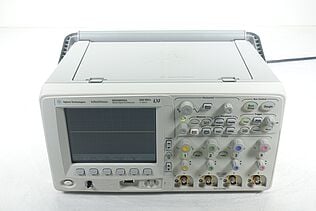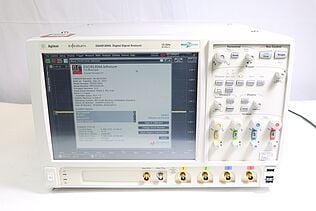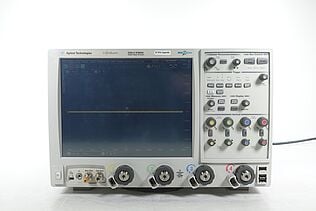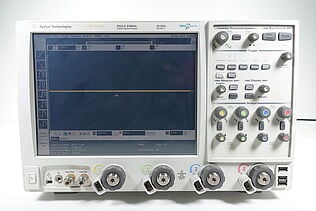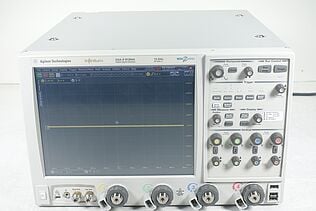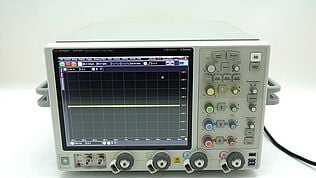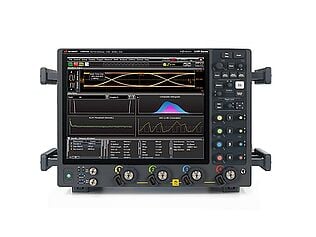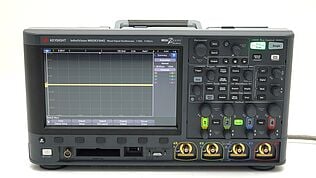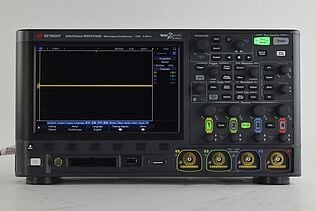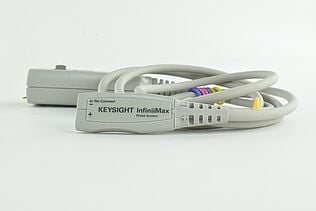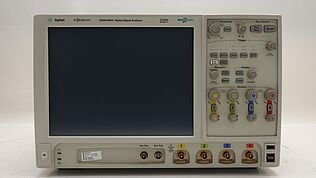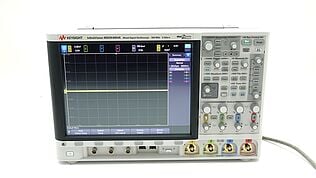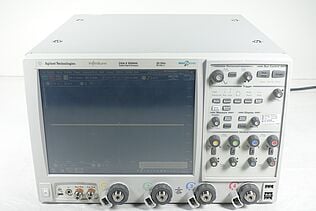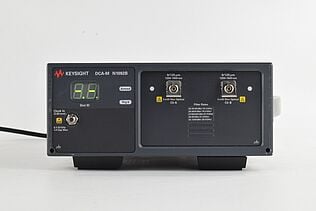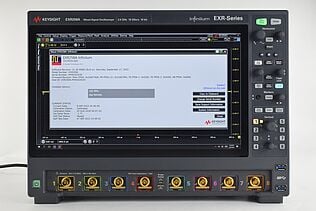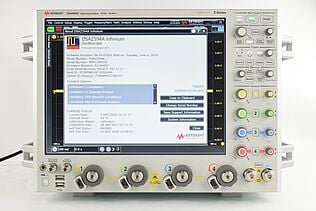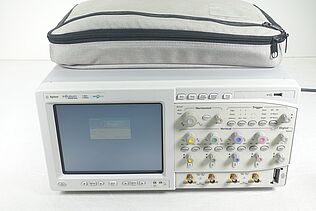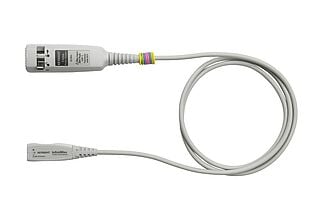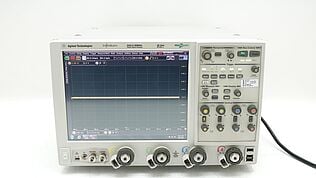- Introduction
- Understanding Biphasic Signals
- Characteristics of Biphasic Signals
- Polarity
- Amplitude
- Frequency
- Waveform Shape
- Applications of Biphasic Signals
- Medical Devices
- Communication Systems
- Electrotherapy
- Battery Charging
- Research and Analytical Instruments
- How to Identify a Biphasic Signal on an Oscilloscope
- Step-by-Step Process
- Key Oscilloscope Settings
- Comparison Between Biphasic and Monophasic Signals
- Advantages of Using Biphasic Signals
- For Medical Devices
- In Electrical Engineering
- Conclusion
- Whenever You’re Ready, Here Are 5 Ways We Can Help You
此页面暂时不提供中文版本。我们计划在不久的将来提供更多内容并支持中文。
感谢您的投票。Did you know that a pacemaker relies on biphasic signals for it to function properly?
A biphasic signal is a fundamental concept in electrical engineering, particularly relevant in fields where precise signal control and interpretation are critical, such as medical device manufacturing and telecommunications.
Understanding Biphasic Signals
A biphasic signal refers to a waveform that crosses the zero amplitude line, exhibiting both positive and negative values. This type of signal effectively balances charge in the system, which is crucial in applications like defibrillators and neural stimulators.
| Key Takeaway |
|---|
| Biphasic signals are crucial in modern electronics and medical applications for their ability to deliver balanced, efficient energy transfer, reducing power consumption while maintaining high signal integrity and system reliability |
Empower Your Projects With a Used Keysight Oscilloscope
Characteristics of Biphasic Signals
Biphasic signals are not just two-toned waves on a screen; they are complex and vital components in various electronic and medical applications. Each characteristic of a biphasic signal contributes to its functionality and suitability for specific tasks.
Polarity
- Two phases: Biphasic signals are composed of two distinct phases – one that moves above the zero amplitude line (positive) and one that dips below it (negative).
- Charge neutralization: The alternating phases help neutralize the net charge delivered by the signal, which is crucial in preventing harmful effects in biomedical applications and ensuring signal stability in engineering systems.
Amplitude
- Variable intensity: While the signal's amplitude can change, it will always pass through zero, creating a waveform that goes positive and negative.
- Dynamic range: The amplitude of a biphasic signal can be finely tuned, offering a wide dynamic range that can be adapted for delicate electronic components or robust power applications.
Frequency
- Spectrum of rates: The frequency of a biphasic signal, which determines how quickly it oscillates between its two phases, can be as low as a few hertz in some medical devices to several megahertz in RF communications.
- Application-specific timing: Engineers design the frequency of these signals to match the requirements of the application, whether it’s syncing with the natural frequency of a biological system or aligning with the clock speed of a digital circuit.
Waveform Shape
- Shape diversity: The waveform shape of a biphasic signal can vary greatly, including square waves often used in digital logic, sinusoidal waves used in AC power systems, and more complex shapes like biphasic exponential or customized waveforms for specific biomedical applications.
- Custom tailoring: Engineers can tailor the waveform to optimize performance for particular applications. For instance, a defibrillator might use a truncated exponential biphasic waveform to maximize efficiency and minimize cardiac damage.
Each of these characteristics allows electrical engineers to craft a signal that aligns with the delicate specifications of modern technology, creating harmonious interactions between electronics and their applications.
Whether tuning a pacemaker to work in concert with a beating heart or calibrating communication equipment for clear data transmission, understanding the nuances of biphasic signals is a fundamental skill in the electrical engineering domain.
Applications of Biphasic Signals
The versatility of biphasic signals allows them to play an essential role across various fields. The way they manage energy and information makes them indispensable in modern technology.
Medical Devices
Pacemakers
- Heart rhythm management: Pacemakers utilize biphasic signals to deliver electric pulses that help maintain a regular heart rhythm, mimicking the natural pace of the heart.
- Energy efficiency: By employing biphasic pulses, these devices can operate effectively at lower energy levels, which is safer for the patient and extends the device's battery life.
Defibrillators
- Cardiac arrest intervention: Defibrillators send a biphasic current through the heart to stop irregular heartbeats and restore normal rhythm.
- Reduced cardiac stress: The biphasic waveform allows the defibrillator to be more efficient, achieving the desired heart response with less energy.
Communication Systems
Balanced Data Transmission
- Signal clarity: Biphasic signals are used in communication systems to balance the transmitted data, ensuring clear signal integrity with minimal noise.
- Error reduction: The clear distinction between the high and low states in a biphasic signal can reduce the bit error rate in digital communication systems.
Electrotherapy
Pain Management and Muscle Stimulation
- Therapeutic applications: Electrotherapy devices deliver controlled biphasic currents to manage pain or stimulate muscles for rehabilitation purposes.
- Non-invasive treatment: By alternating between positive and negative phases, these signals can stimulate tissues without causing long-term damage or the discomfort associated with monophasic stimulation.
Battery Charging
Efficient Charge Cycles
- Battery life extension: Using biphasic currents can enhance the charge efficiency and prolong the overall battery life in rechargeable batteries.
- Balanced charging: Biphasic chargers can prevent overcharging and reduce heat generation, leading to safer and more balanced charging cycles.
Research and Analytical Instruments
Biomedical and Chemical Analysis
- Signal detection: In biosensors and chemical analysis equipment, biphasic signals can help in detecting and amplifying biometric or chemical responses.
- Precise control: These signals provide precise control over the measurement and testing processes, ensuring accurate and reliable results.
Biphasic signals thus shape a wide array of technologies and equipment, optimizing performance and safety across disciplines. Their unique ability to deliver controlled energy and information while maintaining balance makes them a critical component in advancing both the capabilities and the reliability of electronic systems.
How to Identify a Biphasic Signal on an Oscilloscope
When working with electronic signals, being able to correctly identify and analyze them is a critical skill. Oscilloscopes are the primary tools for this task. Let's delve into the step-by-step process of identifying a biphasic signal using an oscilloscope.
Step-by-Step Process
1. Connect the device
Attach the device under test to the oscilloscope using the appropriate probes and connectors. Ensure that all connections are secure and the oscilloscope is properly grounded to avoid interference or inaccurate readings.
2. Set the baseline
Position the oscilloscope's trace to the center of the screen to establish a clear baseline, which represents zero voltage. The baseline serves as the reference point from which the positive and negative phases of the biphasic signal will be observed.
3. Calibrate the scale
Set the voltage-per-division setting so that the expected amplitude of the signal fits well within the screen's grid. Adjust the vertical scale carefully to differentiate between the biphasic signal's positive and negative phases distinctly.
4. Observe the waveform
Look for the waveform's crossings over the baseline, which indicate the transition points between positive and negative voltages. Pay attention to the shape and duration of the waveform as it traverses above and below the baseline.
5. Analyze the phases
Note the duration and amplitude of the positive phase compared to the negative phase. Determine whether the positive and negative phases are symmetrical or if there are any intentional or unintentional discrepancies.
Key Oscilloscope Settings
Time Base
- Temporal resolution: Adjust the time base to ensure that one or more complete cycles of the waveform are visible on the screen.
- Waveform observation: A properly adjusted time base allows for the observation of periodicity and frequency of the signal.
Trigger Level
- Stabilizing the display: Set the trigger level so that the oscilloscope consistently captures the signal at the same point in its cycle, which will stabilize the waveform on the display.
- Capture consistency: A correctly set trigger is crucial for comparing multiple cycles of the signal and for precise measurements.
Voltage Scale
- Amplitude clarity: Fine-tune the voltage scale to get a detailed view of the signal's amplitude, making it easier to measure and analyze.
- Enhanced visibility: Proper scaling is especially important when working with signals that have low-amplitude phases or when distinguishing between different waveform shapes is necessary.
Comparison Between Biphasic and Monophasic Signals
| Aspect | Biphasic Signal | Monophasic Signal |
|---|---|---|
| Polarity | Positive and negative | Single polarity (positive or negative) |
| Charge Balance | Balanced charge in the system | Potential for charge accumulation |
| Applications | Defibrillators, neural stimulators | DC circuits, simple electronic devices |
Advantages of Using Biphasic Signals
Biphasic signals hold a prominent place in both medical and engineering applications due to their inherent advantages. These dual-phase signals bring about improved efficiency and safety in medical devices and ensure better performance and reliability in electrical engineering applications.
For Medical Devices
Improved Efficiency
Efficiency is a key advantage when using biphasic signals in medical devices. These signals achieve the desired therapeutic effects using less energy compared to their monophasic counterparts.
The implications are significant: not only do patients experience less discomfort, but the longevity and battery life of the implantable medical devices are substantially extended, reducing the frequency of invasive battery replacement surgeries.
In Electrical Engineering
Signal Integrity
In the realm of electrical engineering, especially in telecommunications and data transfer, maintaining signal integrity is a constant challenge. Biphasic signals inherently possess a high level of signal integrity, which is particularly beneficial over long cable runs.
The presence of both phases within the signal helps in mitigating phase-induced errors and reduces the need for complex power supply arrangements, leading to more straightforward and better designs.
Charge Balancing
One of the quintessential advantages of biphasic signals is their ability to prevent the accumulation of charge. This is critical in applications involving sensitive electronic components where charge buildup can lead to static discharge or component degradation.
Biphasic signals naturally alternate the charge, which results in a net-zero accumulation over time, thereby protecting the longevity and functionality of electronic systems.
Discover Our Selection of Used Oscilloscopes
最多可以选择3台仪器进行对比
Enable Notifications
In order to use this feature, you need to enable notifications.
Manage notification preferences
Conclusion
Biphasic signals have become a cornerstone in modern technology, finding critical use in a diverse range of fields from medical devices that save lives to communication systems that connect the world.
They marry efficiency with safety, ensuring minimal energy use while maximizing performance. The duality of their nature offers a balance that is invaluable in electrical engineering, providing clear signal transmission and protecting sensitive components from damage.
Understanding and harnessing the power of biphasic signals requires precision equipment capable of detailed measurement and analysis.
For professionals looking to equip themselves with the best tools without stretching their budget, the Keysight Used Equipment Store presents an exceptional opportunity.
Our premium used oscilloscopes, signal analyzers, function generators, and multimeters are meticulously refurbished to meet the highest standards, ensuring you get reliable and accurate results in all your projects.

Whenever You’re Ready, Here Are 5 Ways We Can Help You
- Browse our Premium Used Oscilloscopes.
- Call tech support US: +1 800 829-4444
Press #, then 2. Hours: 7 am – 5 pm MT, Mon– Fri - Talk to our sales support team by clicking the icon (bottom right corner) on every offer page
- Create an account to get price alerts and access to exclusive waitlists.
- Talk to your account manager about your specific needs.

